Essex County Club
MA, USA
Green Keeper: Eric Richardson
No secret why Essex County turned out so well – Donald Ross lived on the course from 1909 through 1913 and worked on it constantly. As a result, the course at Manchester-by-the-Sea features many of Ross’s design traits that are now recognized as distinguishing his finest work. Essex County originally started as a nine hole course, which was typical of Boston’s finest north shore courses. Salem Country Club and Myopia Hunt Club began in a similar manner. Fortuitously, Essex Golf Chairman George Willett was a pupil of a young golf professional named Donald Ross at the Oakley Country Club, where Ross had been since his arrival in the United States in 1898. In 1908, Willett hired Ross to redesign their course. They acquired the necessary land to create an eighteen hole course and Ross slowly went to work. He did several holes every year and throughout the process the course remained open. His work was not completed until 1917.
An aerial view shows that Ross had space considerations but he was quite clever in how he used such limitations to the betterment of the course. For instance, the second and sixth greens border the club boundary and there is no more room to extend the tees backward. The maximum length each hole could play is in the 340 yard range. So what does Ross do? He builds two superlative crowned greens that can be desperately difficult to hold. Thus, he transformed two holes that could easily have been non-descript into two holes with excellent golf qualities. To show such flair early in his design career was a sure sign of things to come from the Scot. Essex County is another instance where he lived up to his own design standard, which he wrote in 1914 was to ‘build each hole in such a manner that it wastes none of the ground at my disposal, and takes advantage of every possibility I can see.’
The variety in the size and presentation of bunkers may well be the best in Ross’s entire portfolio of courses. Four examples include the two mammoth bunkers that break up the long third, the awesome (and penal) pit bunkers beneath the eleventh green, the newly expanded and restored straight faced greenside bunker at the fifteenth, and the sprawling expanse of sand that cuts across the fifteenthand sixteenth holes. Fortunately, unlike other clubs that possess a Ross course, Essex County has always embraced Ross’s varying forms of hazards and has never tried to make all the bunkers similar in appearance. As further proof of the awesome range of hazards that Essex County enjoys, consider some of the bunkers found in holes six through nine.
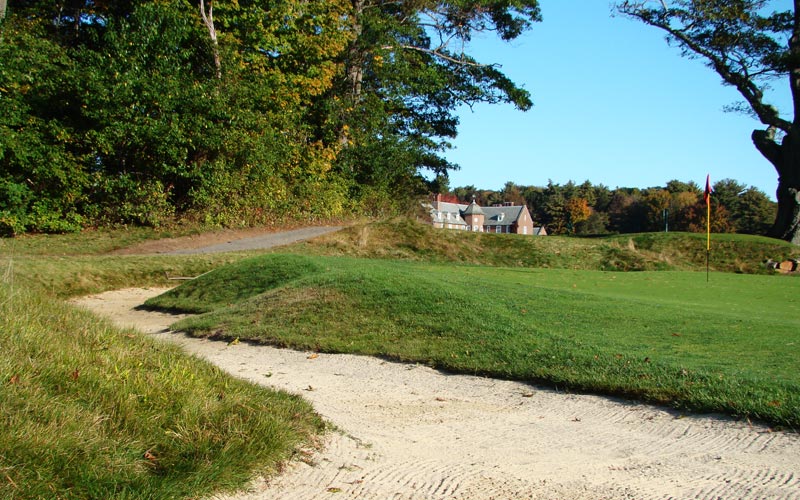
…this narrow trench bunker provides awkward stances/swings for those that pull their tee ball. And one hole ahead the golfer contends with…
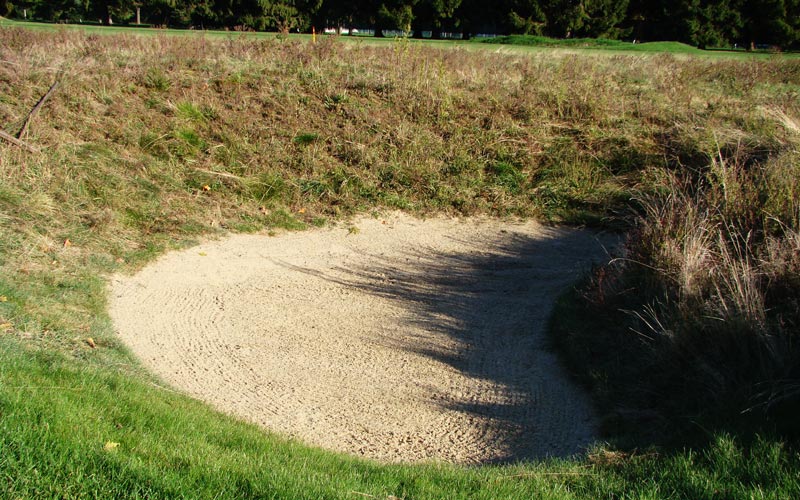
… this pit of despair. The Curtis Cup players in 2010 can be forgiven if they become confused as to which country is hosting the event!
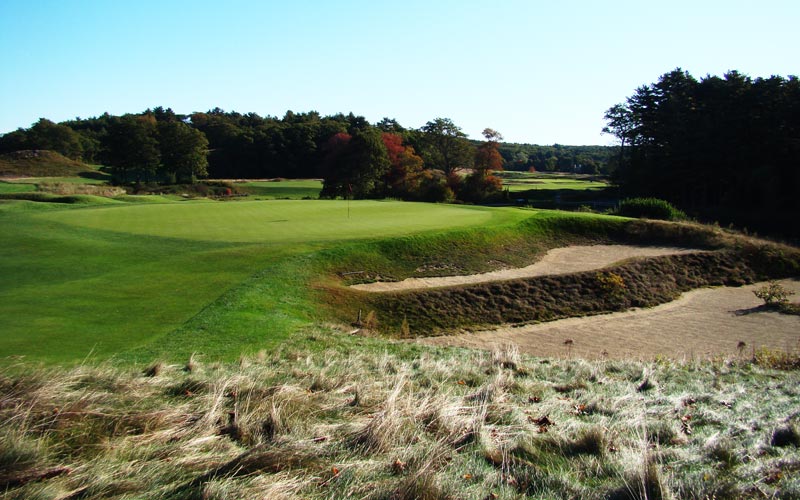
As a final example of the variety, this double-tiered greenside bunker at the ninth is unlike any other on the course, or practically in the game for that matter.
When coupled with its unique New England terrain, Essex County enjoys a strong sense of being an original – it reminds you of no other course and defies being stereotyped, which are the two hallmarks of all great courses. No wonder that Brad Klein in his July 1999 Feature Interview on this site selected Essex County as one of his favorite hidden gems, praising the use of fescue grasses and how the trees are kept well back from play. Another appeal of Essex is that it is natural golf in the strictest sense. In August, the fairways are a beautiful hue of brown with the native fescue grasses waving in breeze off the Atlantic Ocean, which is only a quarter of a mile away. Furthermore, Essex is over the town’s aquifer and the well house for the town is actually located between the sixth and seventh greens. In 1991 the town issued the club a ‘special permit’ to operate (after 98 years) but the permit limits pesticide and fertilizer usage. Essex is 98% natural organic in fertilizer use, with restrictions on quantity in every area. Plant protectants (pesticides) are limited. This is truly natural golf at its best.
With everything going for it, why isn’t Essex County mentioned in the same breath as Pinehurst No.2 and Seminole when people discuss Ross’s standout courses? Well, this author thinks it should be, especially given the quality of work that has been accomplished here by the club and Renaissance Design’s Bruce Hepner since 2001. According to Hepner:
We have basically pealed back the layers of growth at Essex County to expose Ross’s genius. We first restored the playing surface widths of the greens and fairways. While other local clubs tried to stiffen their designs by narrowing the golf, Essex expanded the surface and made it much more interesting and in turn a little bit harder for the good golfer. The members found that their shots rolled out into positions they had never seen before. The golf design returned to strategic. Then we thinned back the tree lines to allow the design and landscape to breathe again, which had the added benefit of allowing the sea breeze to circulate throughout the property. This also gave a dynamic look to the site with the bold native grass covered contours. In short, Essex County is a stunning natural golf landscape.
Showcasing what Hepner refers to, look below as to how the mounds between the fifteenth, second and third holes have been fully exposed.
Hepner continues:
We then focused on the golf features. The scale of the site varies so Ross in turn varied the scale of his features. There are huge waste type bunkers next to little pots. Also, the feature mounding range in size from little dolomites complexes to single mounds the size of a bus. There are open core golf parcels (four parallel holes) to tree lined single hole corridors. You get a little bit of every type of golf environment at Essex and Mr. Ross took advantage of it. Green Keeper Eric Richardson has taken the playing surface to levels I’d never imagined possible at Essex. Val Somers (Green Chair) and he have allowed me to do my best work by encouraging and implementing any and all concepts. All in all, I think our work shows off one of Donald Ross’s finest and most eclectic examples of golf architecture.
The timing of the work done couldn’t be better as it will be unveiled to a wide audience when the Curtis Cup is contested here June 11-13, 2010 (www.2010curtiscup.com). As many know, the Curtis sisters actually hailed from here. Essex County hosted the third playing of the Curtis Cup in 1938 and it is interesting to note that the course set-up for 2010 is only 180 yards longer than in 1938. Such is the enduring character of its golf holes, as we see below.
Holes to Note
First hole, 440 yards; The first tee is in the only appropriate spot: directly beneath the clubhouse windows and balcony and has been in continuous use since 1896.

This view from behind the first green shows it all: the tee beneath the clubhouse, a wide fairway uncluttered by trees, fescue grasses, and an open green which accepts running shots that have been kept low, out of the wind.
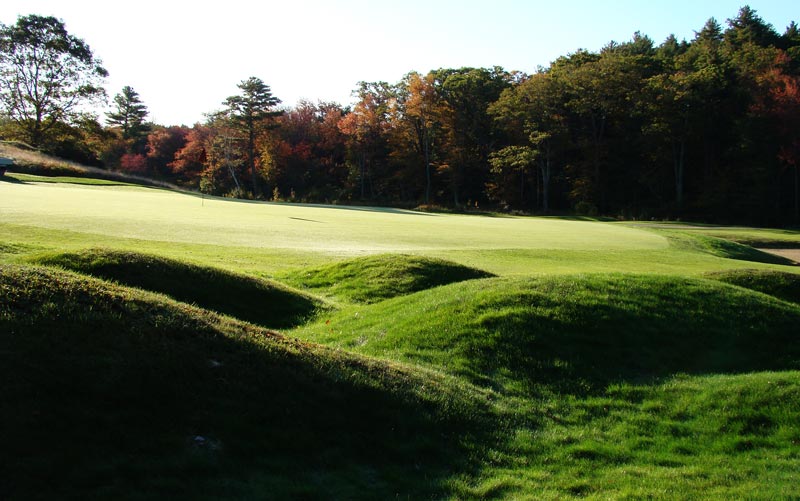
These chocolate drop mounds short left of the first green are an effective hazard and later became a Ross trademark.
Third hole, 625 yards; When Ross completed his work in 1917, a scorecard shows that this hole (then the twelfth) measured 617 yards – and this in the age of hickory golf! It garnered much press as such a length hole was unheard of at the time. Yet, Ross’s creative bunkering prevents it from feeling like a long slog. At the end of the journey, a wide but not deep green with a famous sunken depression provides a wide range of interesting hole locations.

This seventy-five yard long hazard borders the right edge of the third fairway. Treated and maintained as a waste area, the golfer can ground his club should he find it with his tee ball.
Fourth hole, 235 yards; Although Essex County measures fewer than 6,400 yards, it is still full of challenge. When 144 of the best amateurs played two rounds of medal play to qualify to match play for the 2007 Massachusetts’s State Amateur, there was a 67, two 69’s and the other 285 rounds were at or above its tight par of 70. Birdies are hard to come by given the presence of only two par fives (and one is the previous monster) and the severity of the greens on the short par fours. In terms of difficulty, Ross delivered quite a one-two punch when he followed the long hole prior with this brute of a one shotter. In the days of hickory golf, many of the club’s best would have hit driver into this green as it plays in the general of the ocean (and hence is often into the wind). Importantly, the fourth now plays as Ross intended. Since Eric Richardson arrived as Green Keeper in 2007, he has enjoyed the full support of the club in terms of firming up the fairways so that all ground game options are readily available to the golfer. Tellingly, he refers to the irrigation system as a ‘water management system.’ The more control he achieves in spot watering, the faster and firmer the course continues to play.
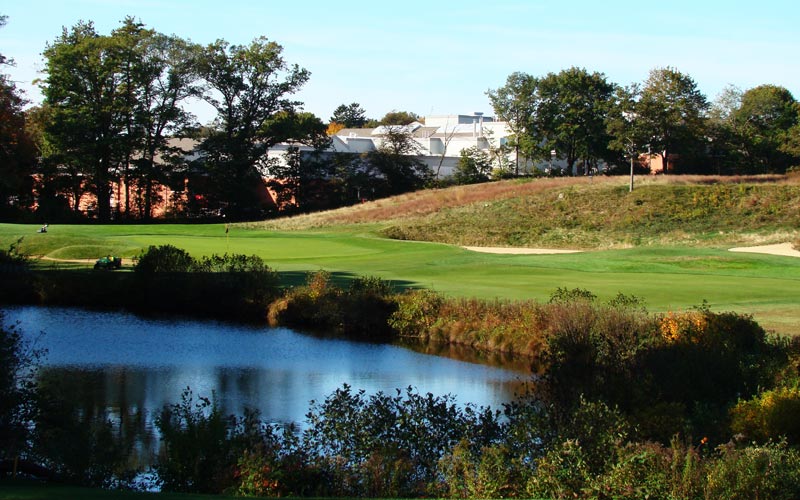
With the fairways now playing firm, a rolling hook aimed at the bunker once again takes the right to left ground contour and runs onto the green.
Eighth hole, 420 yards; Everyone heralds the back nine at Essex County but that has a way of inadvertently taken credit away from the quality of the front nine. This hole for instance is one of the very best on the course and features three distinctive design features. First, the tee ball must scale a fifty foot bank seventy yards off the tee, making it one of four blind tee shots on the course. Then, another hundred yards past the crest of the hill, the right third of the fairway drops seven feet to a lower level. This split level fairway makes the effective target off the tee much smaller as the best angle into the eighth green is down the left but the fairway acts to funnel balls right. With out-of-bounds down the entire left side, the eighth calls for perhaps the most precise tee shots of the day but also for a finely judged approach shot as well with a push-up green that shrugs approach shots left into deep bunkers or right onto tightly mown grass.
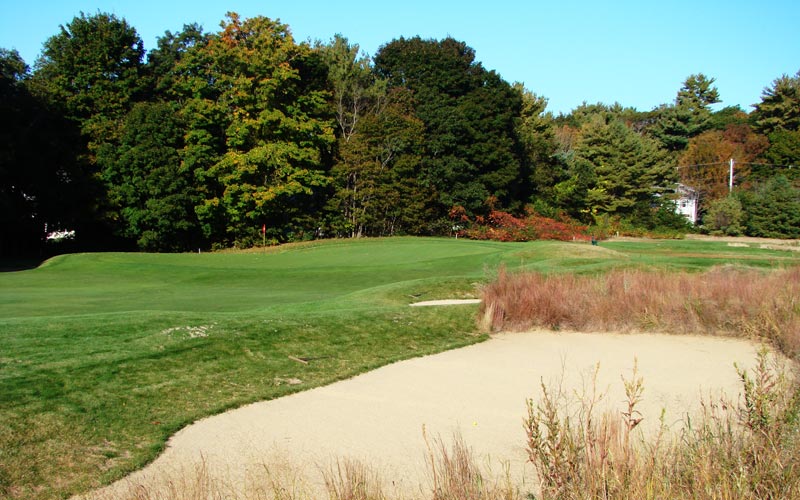
For golfers who steer their tee ball too far right, they face this awkward approach angle to an excellent push-up Ross green.
Tenth hole, 365 yards; As we will see, the diversity of the holes on the back nine is astonishing, ranging from holes in a field to holes that change more than seventy feet in elevation. Yet, they all tie in wonderfully well with each other based on Ross’s inspired routing and how he used the natural features. As a harbinger of exciting things to come, the back starts with a tee ball across the shoulder of a hill that captures the essence of New England’s rugged landscape.
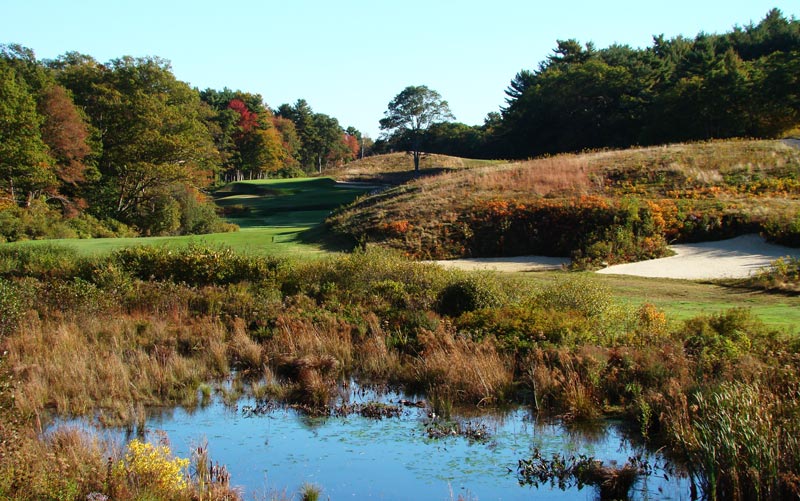
While Pinehurst No.2 enjoys great greens, Essex County enjoys great topography and Ross capitalized on it off the tenth tee where the golfer ideally carries the two bunkers that Ross cut into a natural landform.
Eleventh hole, 175 yards; A superlative uphill one shotter and an obvious for inclusion in Michael Fay’s eclectic Ross eighteen hole course in his book Golf, As It Was Meant to be Played. It is hard to build uphill par threes that are fun to play. The fifteenth at Kingston Heath comes to mind but few if any are in this class. In fact, of the approximately one thousand (!) one shotters that Ross designed after this hole, none are clearly better.
Twelfth hole, 415 yards; This hole plays equally well for all players despite being over rugged ground. From the back markers, a tee ball of 180 yards carries Sheep Hill and safely reaches the tumbling fairway below. This is Ross’s tee and it lends the hole a sense of adventure when playing from there. However, since such a carry is beyond some, a new set of tees a full 120 yards away, this time to the left of the eleventh green, were built in the 1980s. From there, it is a straightforward shot that any player can successfully tackle. The two tee shots meet in roughly the same area in the fairway, despite being hit from tees on opposite sides of the prior hole’s green.
Up and over the golfer goes with his tee ball at the twelfth. Most modern architects would have flattened/reduced the landform, which is but one of a host of reasons so few modern courses compare favorably to Essex County.
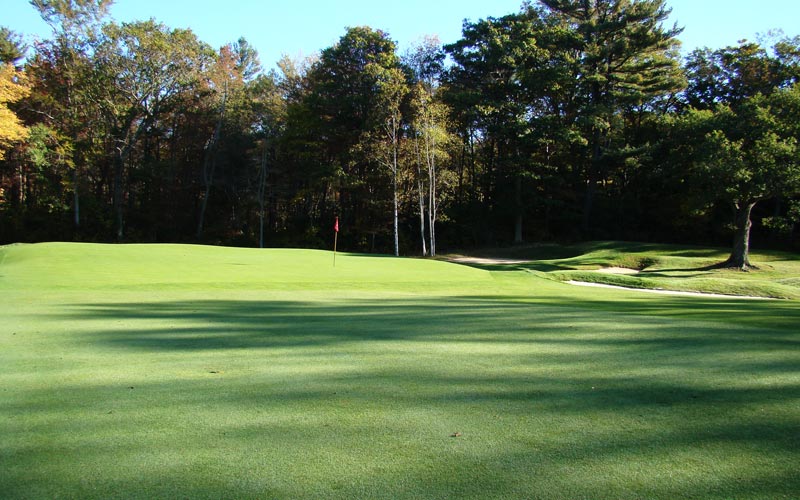
Variety is the key to great architecture and Essex possess it like few other courses. In terms of approach shots, some play dramatically uphill to well defended greens (e.g. the last hole for instance!) and then there are greens like this one that are open and beg for a running approach shot.
Thirteenth hole, 375 yards; A perfect golf hole. Though set through dense trees on both sides, the corridor is plenty wide and the golfer soaks in the view from the tee. The green has perhaps the finest interior contours on the course (which is saying something) as the putting surface falls away from the golfer in the middle and the sides. The approach needs to get beyond certain front hole locations, for only in such a manner does the golfer obtain a favorable uphill putt.
Though set through trees, the thirteenth still exudes a New England charm thanks to the wide playing corridor and grassing schemes.
Fifteenth hole, 350 yards; The fifteenth returns the golfer into the open section of the property and shares nearly nine acres with the second, third and sixteenth holes. Not wanting the golfer to feel any sense of a letdown, Ross built the hazards at fifteen on a grand scale. First, the tee ball must clear the largest expanse of sand on the course while in turn the pitch approach is over the largest greenside bunker. Successfully avoiding such imposing hazards gives every golfer a sense of accomplishment and helps the fifteenth hold its head high with the other holes.
Sixteenth hole, 410 yards; This hole also is a clear indication of what Ross thought of trees on a golf course: keep them out of play. A hole originally ran in this general direction and the fairway was bordered by trees immediately on the left. Ross accepted the basic hole routing but quickly cut the trees. This starts a thrilling finish with it hard to conceive of three more diverse par fours in a row: here, the open sixteenth green accepts running approach shots while the seventeenth plays sharply uphill and requires at least a club or two more for one’s approach than the yardage indicates. Finally, the heroic eighteenth seemingly falls from the sky, tumbling downhill past thrilling, one-of-a-kind landforms.
What if trees still crowded in from the left instead of the fescue grass? The sixteenth hole would be less appealing.
Seventeenth hole, 330 yards; Essex County is a private club so not but so many people get the pleasure of playing it. For many, their idea of Ross as a designer is limited to their perception of his work around Pinehurst where his courses are open to the public. The landforms in the sand hills of North Carolina are nowhere near as dramatic as the ones found here and thus the courses are more straightforward in nature. Hence, Ross as a designer sometimes isn’t given his proper due for building exciting golf holes. Having the vision and courage to route this hole up the 200 foot (!) plus steep hill tells you something about his willingness to take chances for the sake of creating bold, memorable golf.

Though not a long hole, the eighty foot climb from tee to green is yet another example as to how a 6,400 yard course can demand great ball striking.
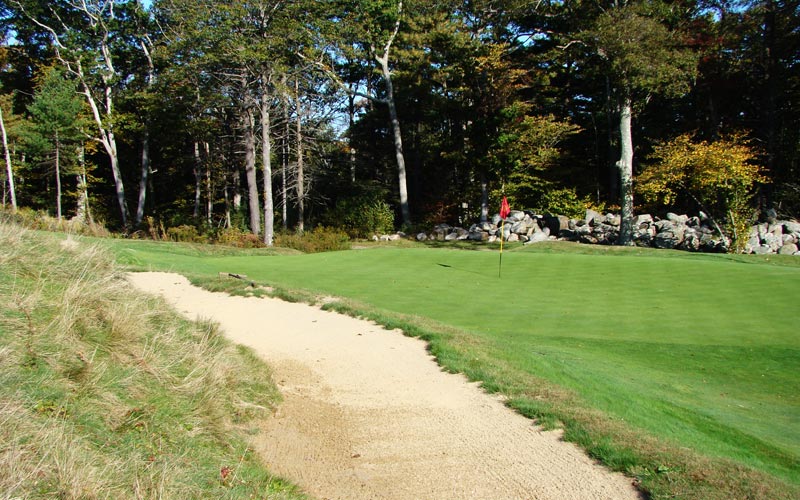
Hard as it is to believe, Ross’s original green was actually twenty yards back and to the left from today’s one pictured above. It was certainly a bear to play to especially with hickory clubs but it proved too difficult to maintain as it sat atop a rock ledge.
Eighteenth hole, 410 yards; The perfect closing hole for such a unique course, and yet, interestingly enough, Ross always had this as the fourth hole (his routing went hole one, sixteen, seventeen, then here). Not until his departure was the sequencing altered to how the course plays today. Though the tee ball is dramatic, the approach shot offers its own subtle difficulties. The fairway is uneven and the approach is often from an awkward lie, usually slightly downhill. The stream that meanders ten yards in front of the green is the logical resting place for a golf ball from a poorly struck iron.
The club has been such a good steward to this gem of a design. Even better, they are now sharing it with the rest of the world when they host the Curtis Cup in 2010, adding another chapter to its storied past. Speaking of which, there was one regrettable moment in the past few years. A litigious neighbor complained about balls coming into his yard and the club ultimately decided to shift the green thirty yards to the right of Ross’s one. Yet, such is the quality of the work done by Renaissance Design that few if any visitors would realize that today’s fourteenth green isn’t a Ross original. In fact, during the Curtis Cup, one of the day’s hole location will likely be on the new green’s back ledge and you can judge for yourself just how happy Ross would be with this fair but devilish hole location.
Beyond that one unfortunate neighbor, what would Ross think of the evolution of this supremely natural design? Of seeing the fairways brown and the course buffeted by the wind from the nearby ocean? He would be delighted, of course. In fact, time has been kinder to this course than almost all his others and one can only imagine that he would head here first for a game before many of his more famous courses that have been bastardized for the sake of hosting championship events. Unlike all but a very few courses in the world, Essex County obtains the perfect balance between fun and challenge. As such, it stands as one of the ultimate benchmarks as to how any course should be judged.
For more information and tickets on the 2010 Curtis Cup, please visit www.2010curtiscup.com
The End


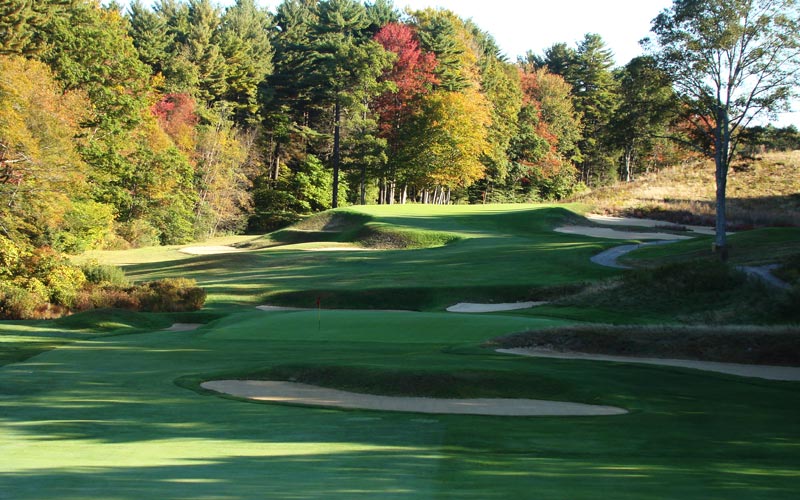
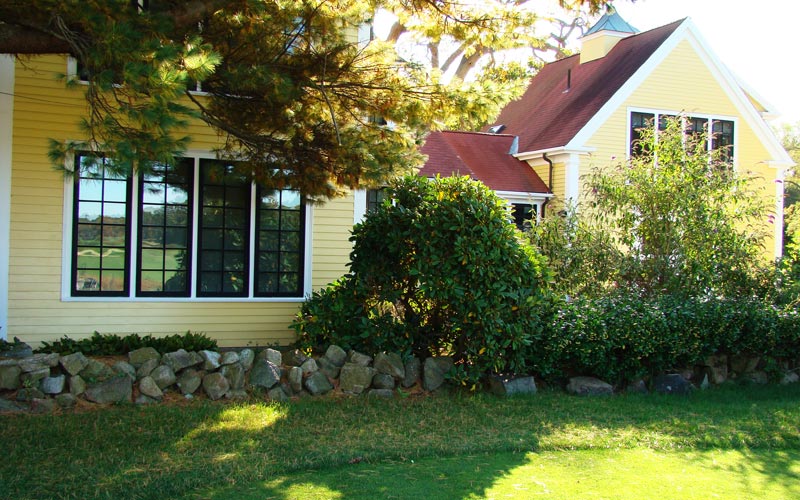


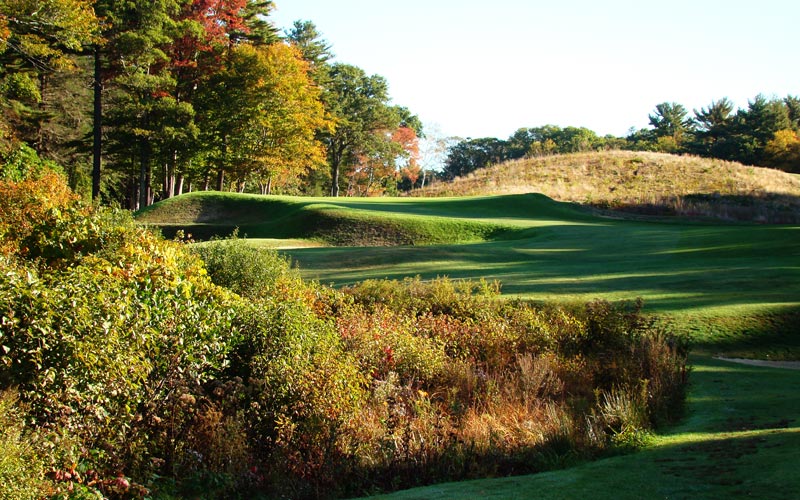
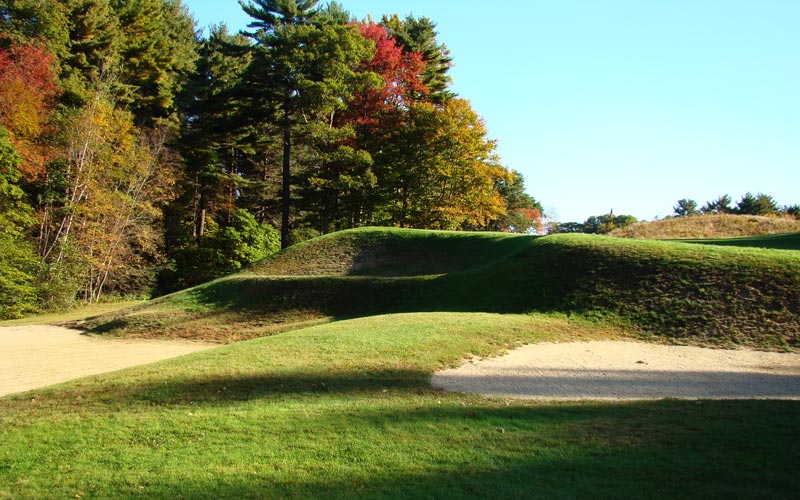
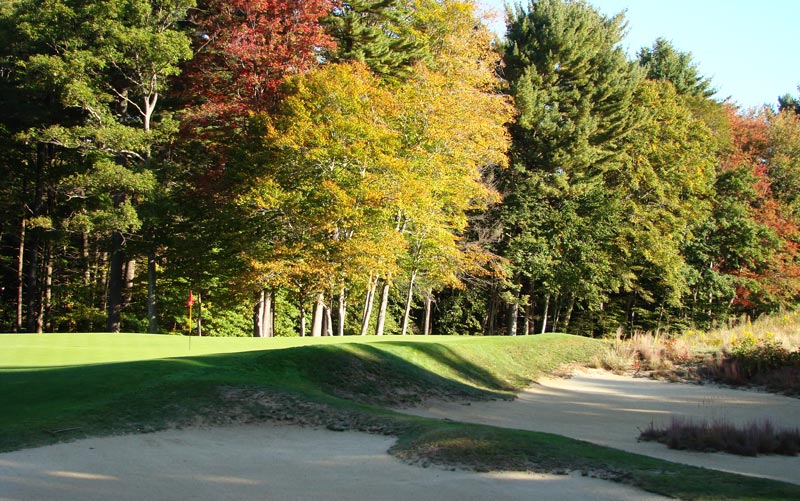
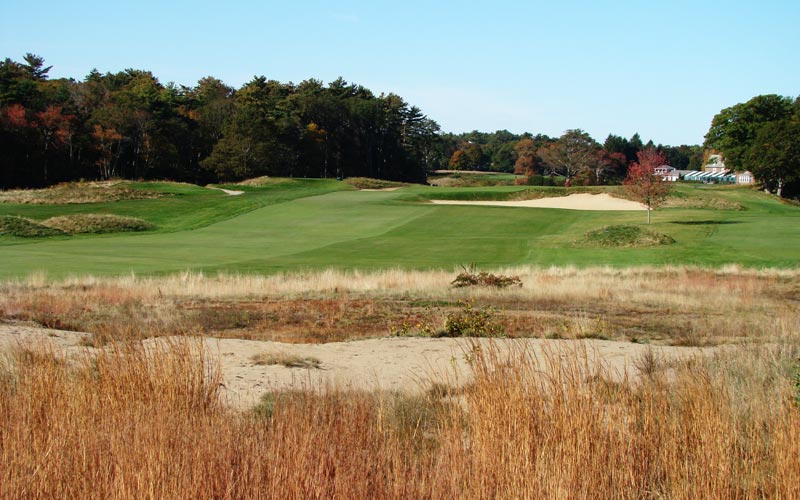
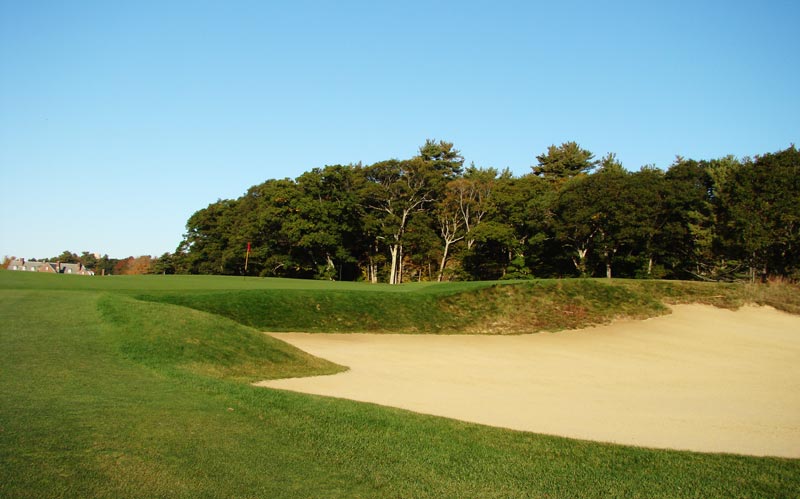
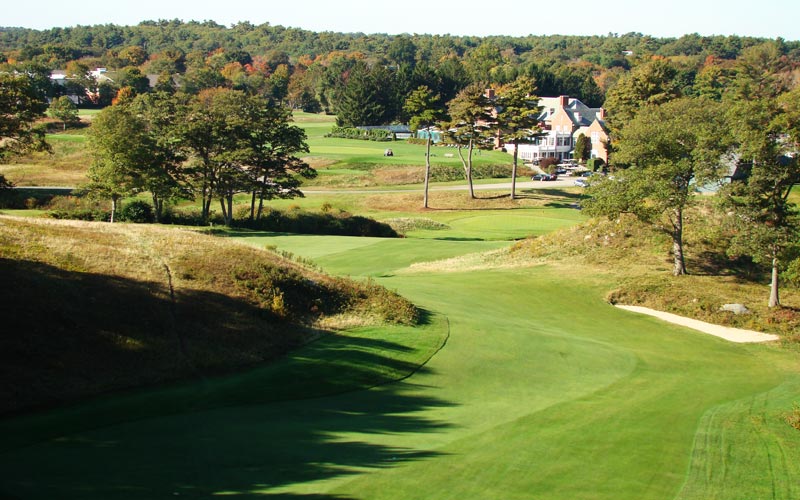
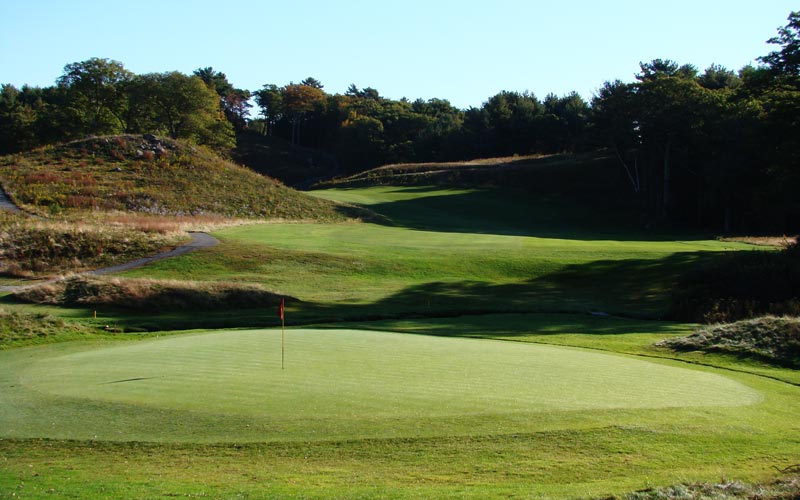



![The Park, West Palm (Lit 9) [2023]](https://golfclubatlas.com/wp-content/uploads/2024/12/IMG_7092-2-scaled-500x383.jpg)


